This blog post is the first in a series of posts on my 10-day trip to Galicia, Spain in September 2019. Galicia is an autonomous community in northwest Spain, with the Cantabrian Sea to the north and the Atlantic Ocean to the west.
We arrived in the afternoon at the airport in Santiago de Compostela. There’s something so incredible about landing somewhere new to you. From this point forward, everything is different. We found ourselves in Galicia for perhaps unusual reasons. Victor’s Dad used to work at a bank, and the bank has a shared apartment scheme whereby employees and ex-employees take turns renting this apartment for up to 2 weeks at a fraction of the cost. Victor’s parents had waited for years to get their chance, and finally 2019 was their year. They picked us up from the airport and we drove an hour south to our accommodation in Raxó, a small seaside town in the Rías Baixas. But, more on that later.
A few weeks prior to our trip we had discovered the existence of some islands off the coast of Galicia. There are a couple groups of them, but we honed in on the Cíes Islands. We also found out that the islands are only open for part of the year and the cut off date was 15 September, the day after we arrived! We quickly changed our existing road trip plans and prepared for a Sunday on the islands.
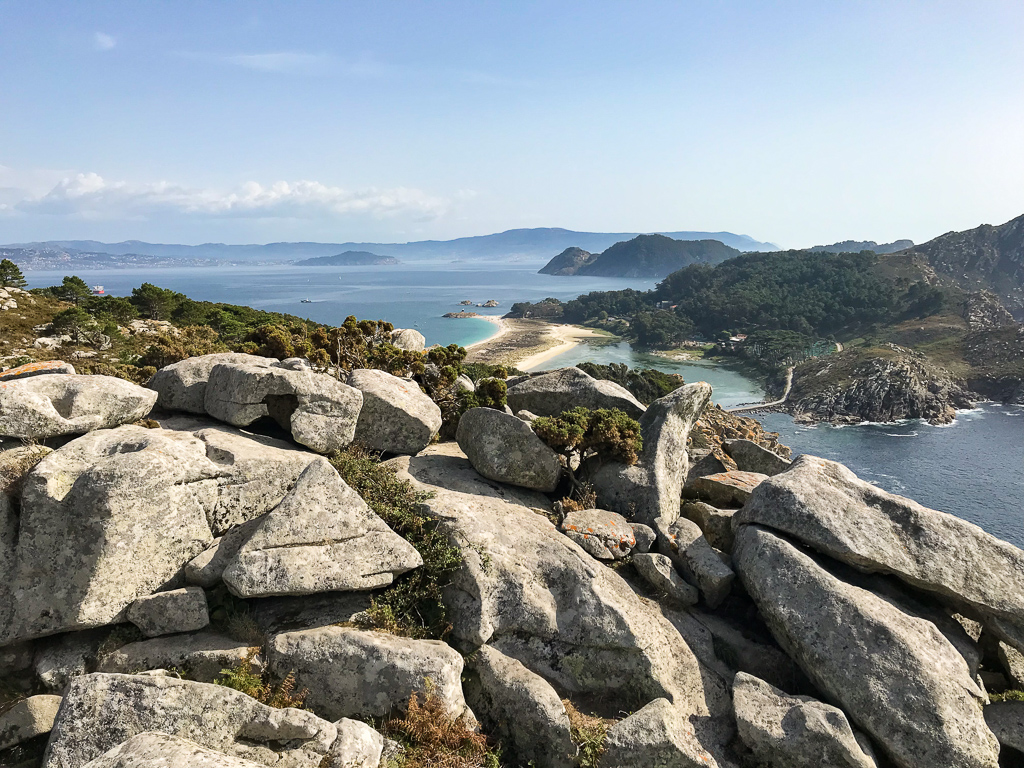
The Ferry and Arrival
The Cies Islands are controlled by the National Park of Atlantic Islands, and they set the limit of how many visitors can travel to the islands each day. The only way to get to the islands is by, of course, boat! To get there you can take a ferry from a few different ports, but the largest and common port to use is Vigo. Needless to say you should book your ticket early for your desired date because obviously things are limited! In addition, tickets are non-transferable and are only for the specific date.

 So, what are these islands exactly? Well, physically, the Cíes Islands are an archipelago made up of three islands: Faro Island (the port is here), Monteagudo Island and to the south San Martiño Island. There are also some islets. And, these are islands are incredibly beautiful. The Romans even called them the islands of the gods and it’s easy to see why!
So, what are these islands exactly? Well, physically, the Cíes Islands are an archipelago made up of three islands: Faro Island (the port is here), Monteagudo Island and to the south San Martiño Island. There are also some islets. And, these are islands are incredibly beautiful. The Romans even called them the islands of the gods and it’s easy to see why!

 It’s important to keep in mind that the Cies Islands are also a nature reserve of sorts. Therefore, there are several rules in space to protect the islands. You’ll see no cars during your time there — only local staff may use small buggies to transport necessary goods. You cannot bring pets (except guide dogs of course), and you should stick to the paths, don’t take shells or pick any of the plants. You also must bring your trash with you! There are no garbage bins on the islands, so you must prepare to bring everything you bring in back out.
It’s important to keep in mind that the Cies Islands are also a nature reserve of sorts. Therefore, there are several rules in space to protect the islands. You’ll see no cars during your time there — only local staff may use small buggies to transport necessary goods. You cannot bring pets (except guide dogs of course), and you should stick to the paths, don’t take shells or pick any of the plants. You also must bring your trash with you! There are no garbage bins on the islands, so you must prepare to bring everything you bring in back out.
If you want to stay on the islands for a night or two, you can only do so via the island campsite. It has small bungalows and tents you can rent, or you can bring your own but you must pitch your tent in the designated campsite area.

The Hike
As soon as we arrived we made our way toward a hiking trail we had looked into beforehand. We wanted to take advantage of the early hour as the high of the day was going to be quite hot! There are at least 4 hiking trails, varying in length and difficulty. The most common one, and the one we chose, is the Lighthouse Mountain Trail. It’s a destination trail, so you head up to the lighthouse and then back down again. It takes about 2.5 to 3 hours, and I’d say it’s medium difficulty.
 The trail itself is well-maintained and paved most of the time. It’s a lovely journey through the island and you run into all sorts of interesting stops.
The trail itself is well-maintained and paved most of the time. It’s a lovely journey through the island and you run into all sorts of interesting stops.
The flora of the Cíes Islands is dominated by Tasmanian blue gums and maritime pines, which together cover a quarter of the islands. You’ll definitely quickly notice how many eucalyptus trees there are. Having grown up in Australia, I was just amazed that these trees were all the way here on Galician islands!
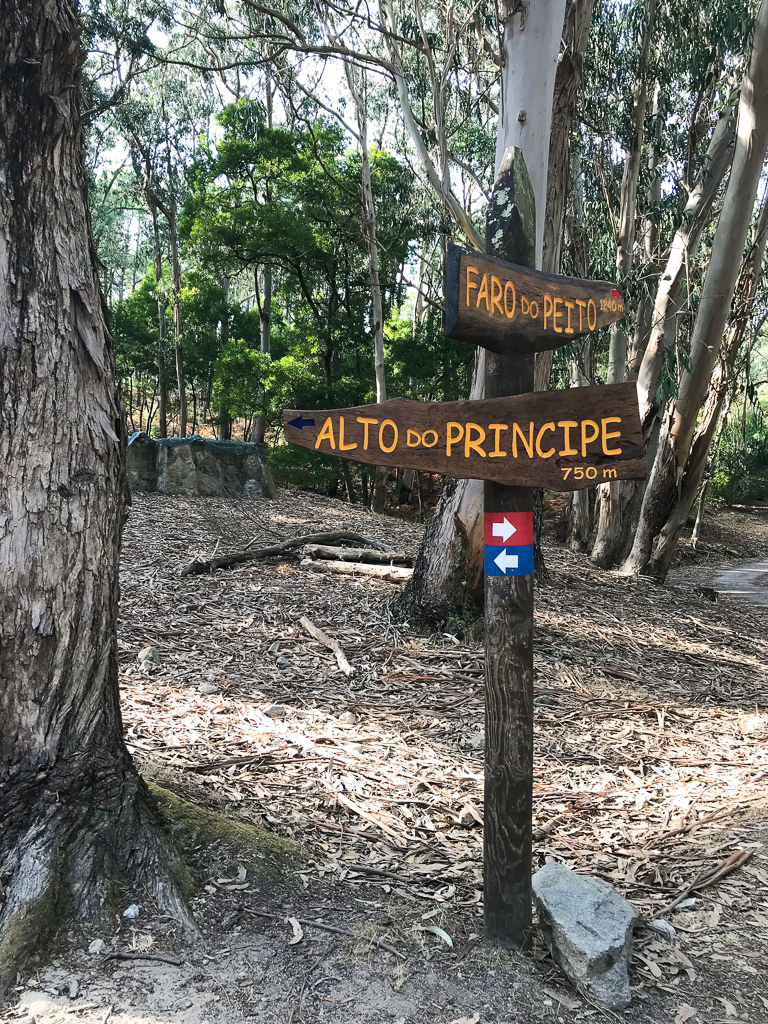
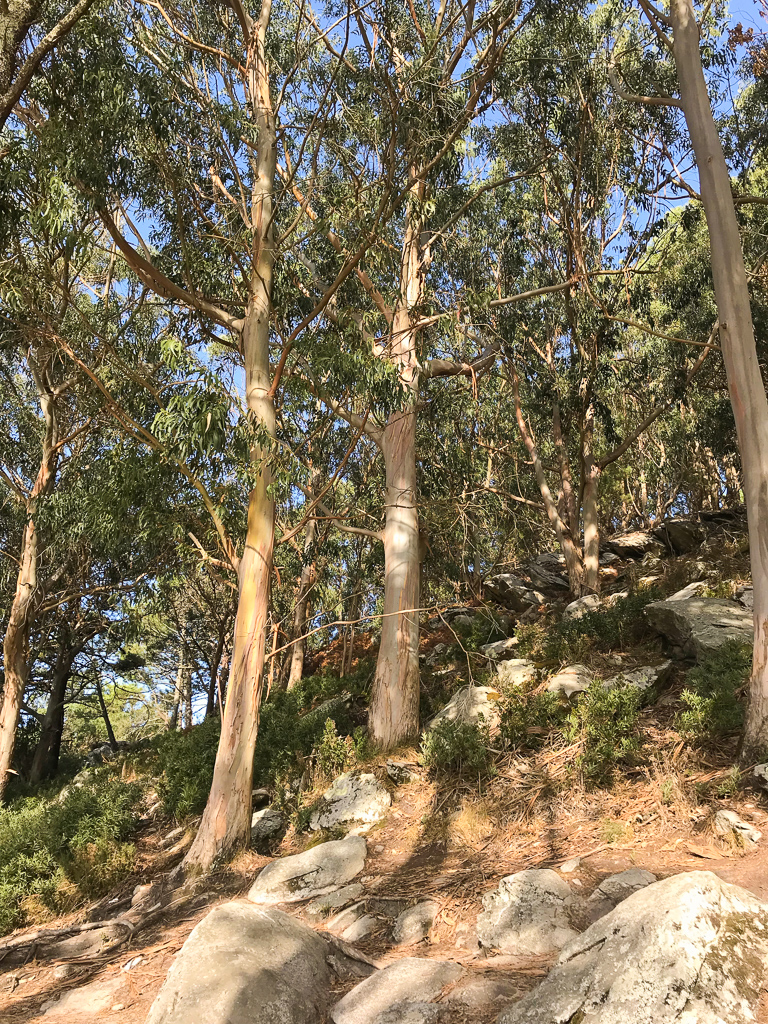
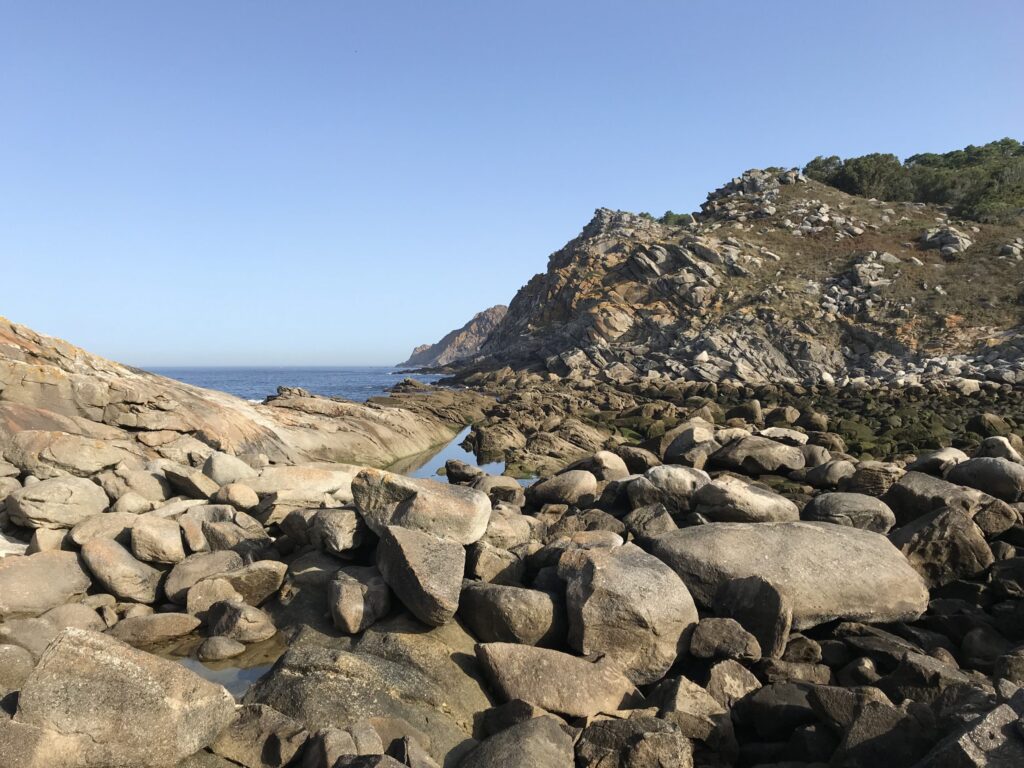
As you continue walking you’ll be surrounded by the swish of feathered wings around you and the wild call of the gulls – the Cíes Islands are home to the world’s largest colony of yellow-legged seagulls!
When you’re about halfway through the hike, be careful because there is hardly any shade going up the main mountain. Sun protection is key, as is water! While the hike is not too difficult, there are some steep parts and when your walking uphill and the sun is glaring on the back of your shoulder, things can seem rough.
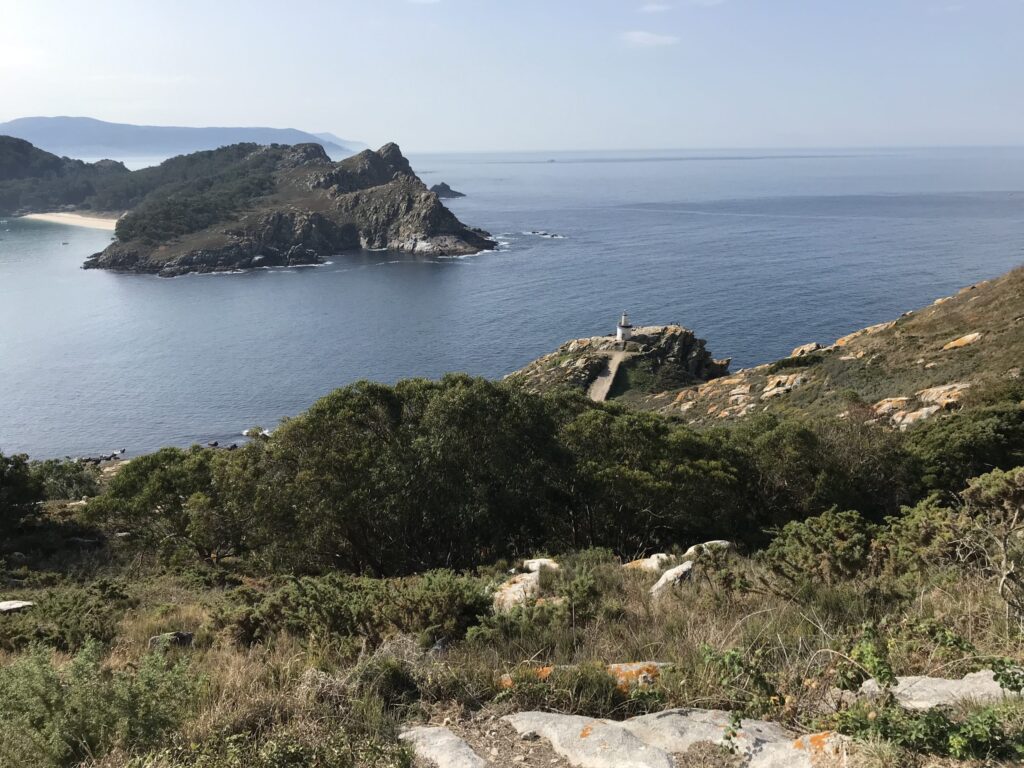
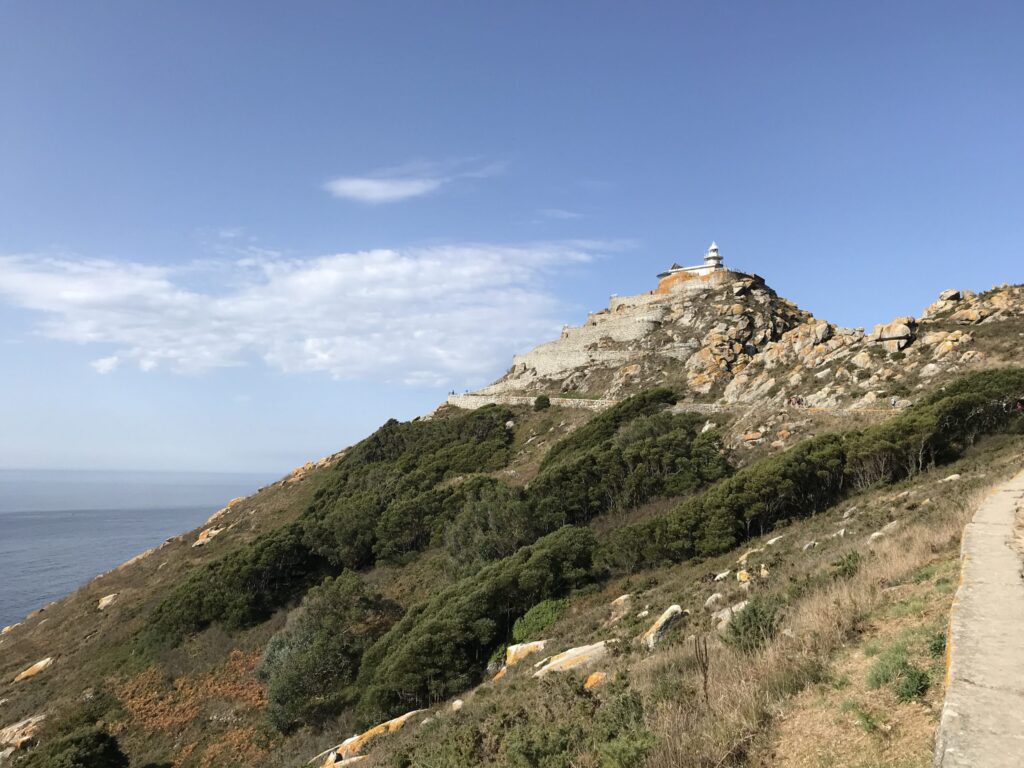

The views all along the trail are incredible. I actually preferred the lower viewpoints over the lighthouse views. Lower down you can see all the rock formations. On the way back down the trail, we also discovered some offshoots leading to different views. There’s so much so discover, so I encourage some exploration here.
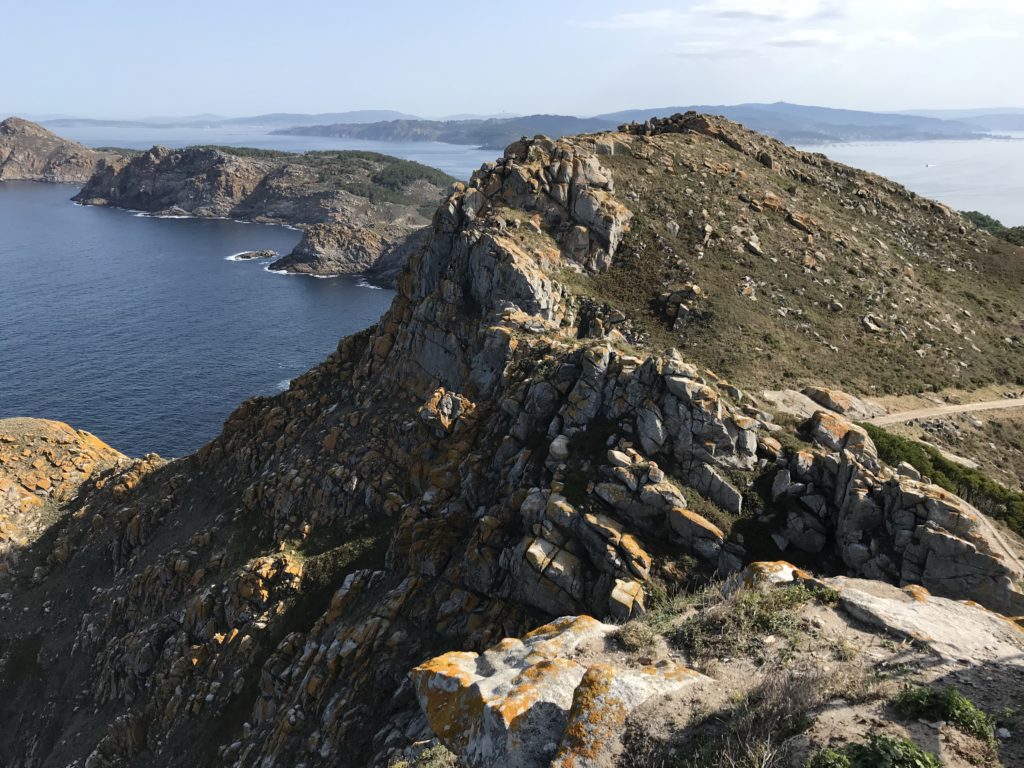
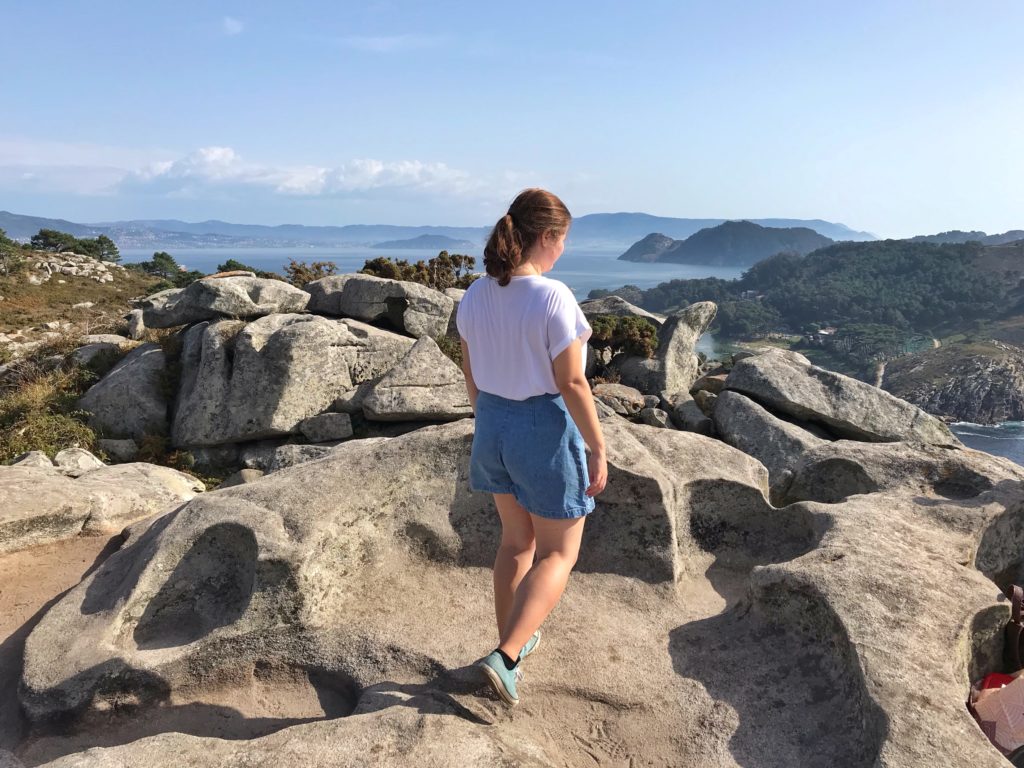
The Beaches
I came across in my research several articles that referred to the Cíes Islands as the Seychelles of Europe. And honestly, these beaches are incredibly beautiful. The sand is naturally white, and the water is clear as can be. Praia das Rodas is the most famous beach on the islands. Back in 2007, The Guardian named it the most beautiful beach in the world. And yes, while that was some time ago, it doesn’t deter from the fact that the beach is stunning.
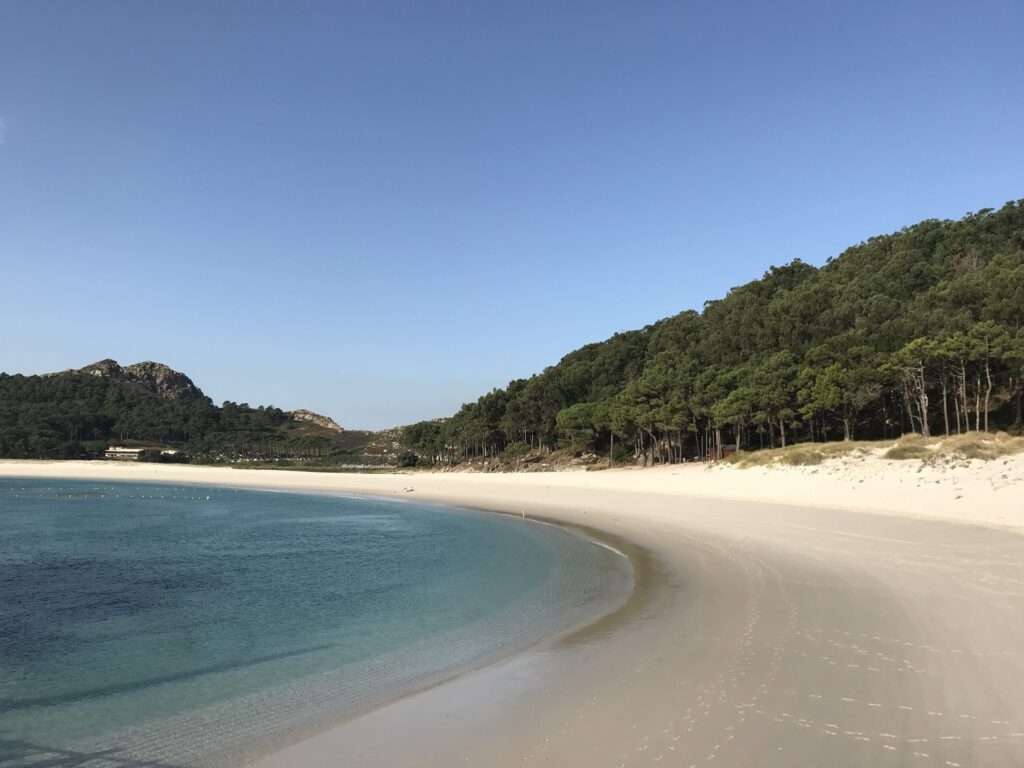

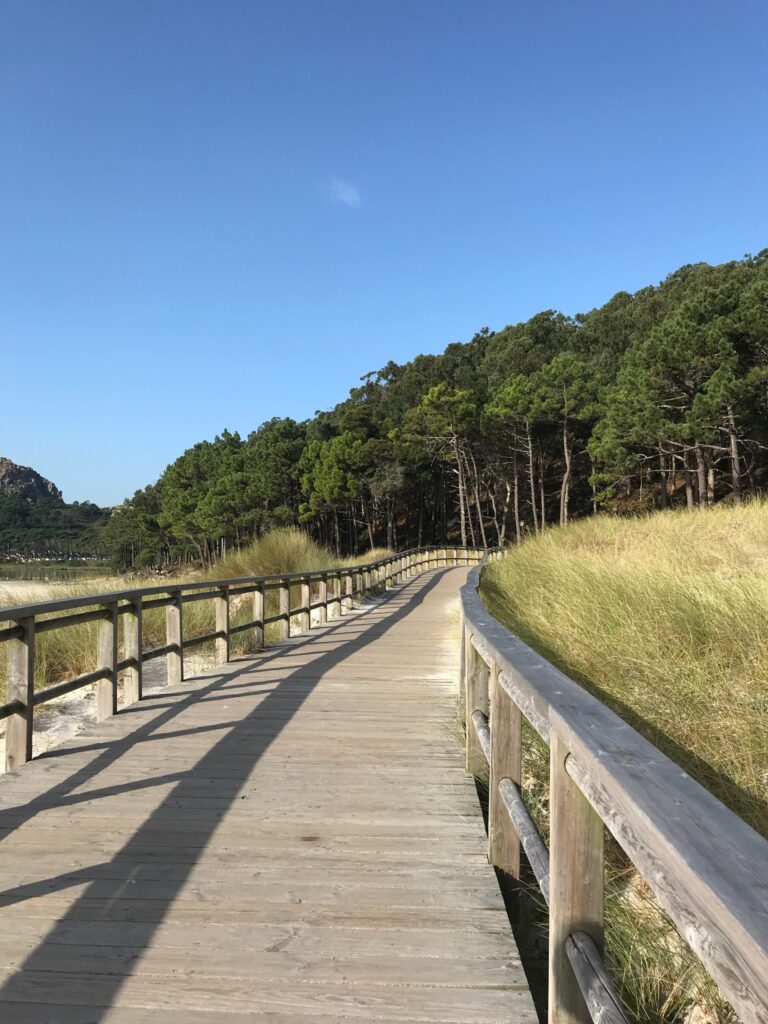
Even though only about 500 people can come to the island, and therefore Praia das Rodas is never crowded, we decided to enjoy a more secluded beach. But let me tell you, the water of the Atlantic is freezing! The islands actually act as a fortress protecting the Galician coast from storms and crazy waves. This means the water here is incredibly cold, and I mean the coldest I have ever felt anywhere.

 I thoroughly enjoyed my first full day in Galicia and it was even better on this islands. The islands are beautiful, and I felt so privileged to see such beautiful waters, mountains and wildlife. I highly recommend a visit if you can manage to organise yourself. There’s nothing quite like it in Europe. Just make sure you follow the environmental rules so we can preserve this natural paradise for hundreds of years to come.
I thoroughly enjoyed my first full day in Galicia and it was even better on this islands. The islands are beautiful, and I felt so privileged to see such beautiful waters, mountains and wildlife. I highly recommend a visit if you can manage to organise yourself. There’s nothing quite like it in Europe. Just make sure you follow the environmental rules so we can preserve this natural paradise for hundreds of years to come.
I’m so excited to share more on Galicia. Next up… eating at private farms that serve amazing, Galician cuisine!

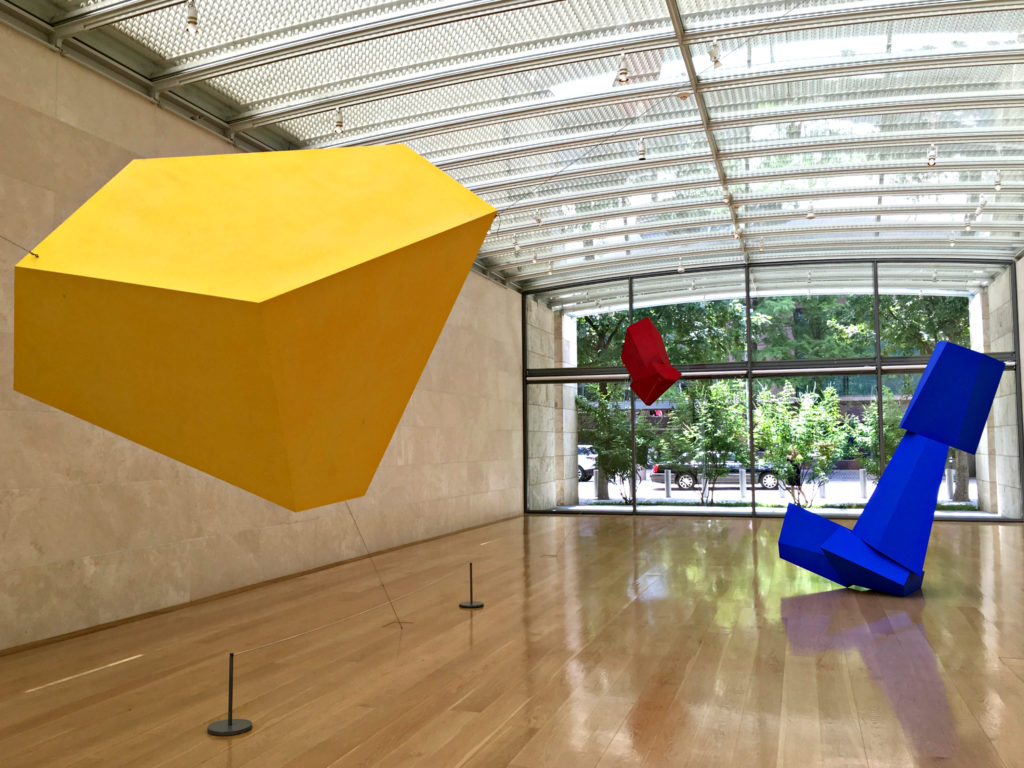
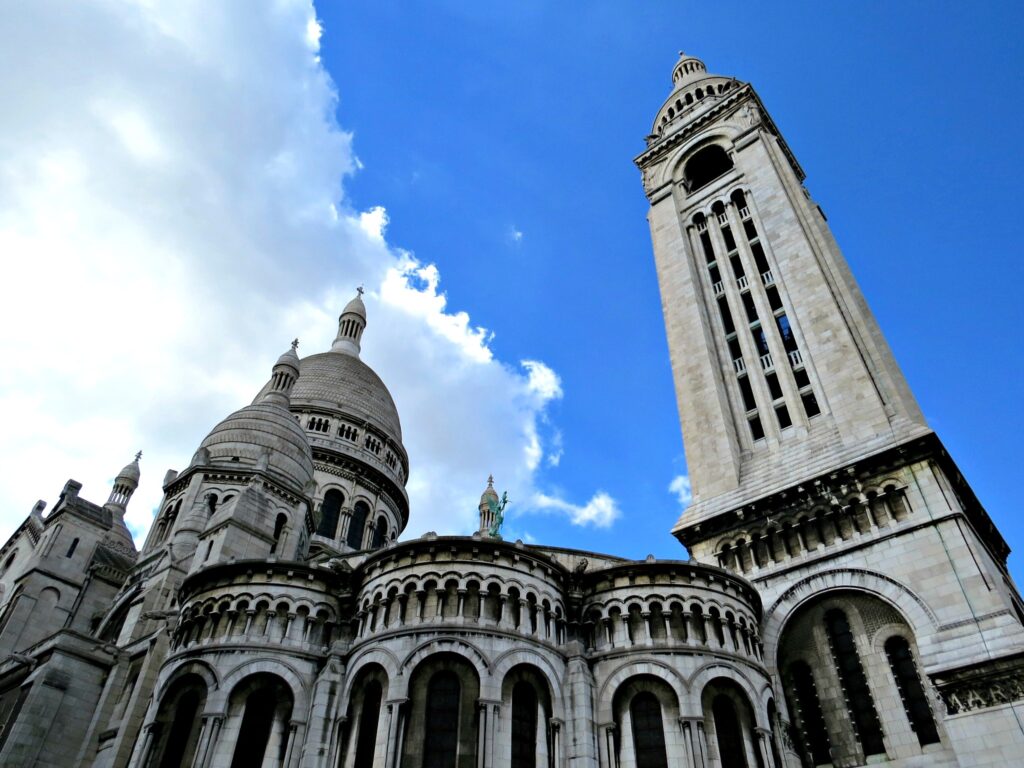

No Comments